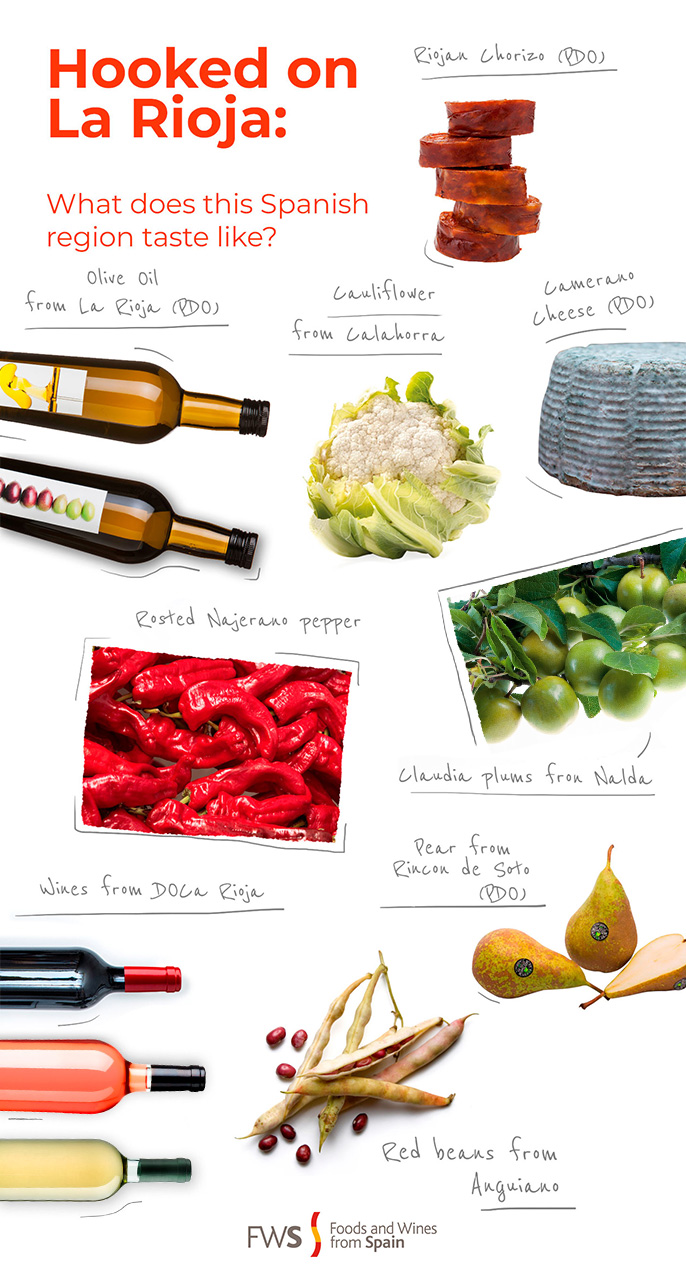.png.transform/rendition-xs/image_image%20(1).png)
What Does La Rioja Taste Like?
The obvious response is that La Rioja tastes of wine. However, you might be surprised to learn about the breadth and variety of this region’s flavorful pantry. Will you join us?

La Rioja is the smallest Spanish region, but its barely 5,000 square kilometers boast a wide selection of products protected by different protected denominations of origin (PDO) and protected geographic indications (PGI). This includes artisanal foods, fresh vegetables and sweets you’ll be sure to fall in love with.
It’s not just wine. Although there’s no doubt that Rioja wine is the most famous product from this region all over the world, the agri-food richness of this region goes far beyond this delectable beverage. Shall we begin?
The best way to start is with its farms. Along the length and width of the Ebro River basin and its tributaries like el Najerilla, el Oja and el Cidacos, there are fertile gardens brimming with marvelous products like Pimiento Riojano (peppers), Coliflor de Calahorra (cauliflower), caparrones (a type of beans) from Anguiano, and fruits like the pears from Rincón de Soto, Claudia plums from Nalda, cherries, peaches, and much more.
La Rioja’s chorizo is practically a sacred food. It forms an important part of the region’s culinary tradition and is found in every home. Chorizo Riojano is protected by PGI status, guaranteeing its artisanal quality and the raw ingredients that are used to make it. What’s more, what would become of this region without one of its most emblematic dishes, patatas con chorizo (potatoes with chorizo)? Another traditional product here is the cured ham, which is sometimes covered in pimentón during the curing process.
The area’s stock-breeding tradition is closely related to delicious products like its lamb, or cordero, (you cannot visit La Rioja and not try its wood-fire grilled lamb chops), and Queso Camerano, which is made in several parts of the region with goat’s milk.
Extra virgin olive oil is always associated with Andalusia, Castile-La Mancha and Catalonia, but it is also made in some regions of northern Spain. La Rioja is one of them, and it even has its own PDO for this product that only takes into account those EVOO made from the native olive varieties Redondilla or Redondal, Arbequina, Empeltre, Macho or Machona, Negral, Royal or Royuelo, Hojiblanca, Arróniz, Verdial, Picual, Cornicabra, Manzanilla and Blanqueta. By the way, Spanish language lovers would probably be interested to know that in La Rioja the term “almazaras” is not used for the olive mills. Here they are called “trujales.”
Do you have a sweet tooth? If so, make sure to seek out sweets from La Rioja like the marzipan from Soto de Cameros, or the fardelejos (puff pastry with almond cream). And here’s another Spanish word that’s only used in La Rioja: “golmajo” is the name used for people who love sweets, while “golmajería,” is used to describe this category of sweet food, rather than the usual Spanish term, “repostería.”
Text: Rodrigo García Fernández /@ICEX
Translation: Adrienne Smith /@ICEX


